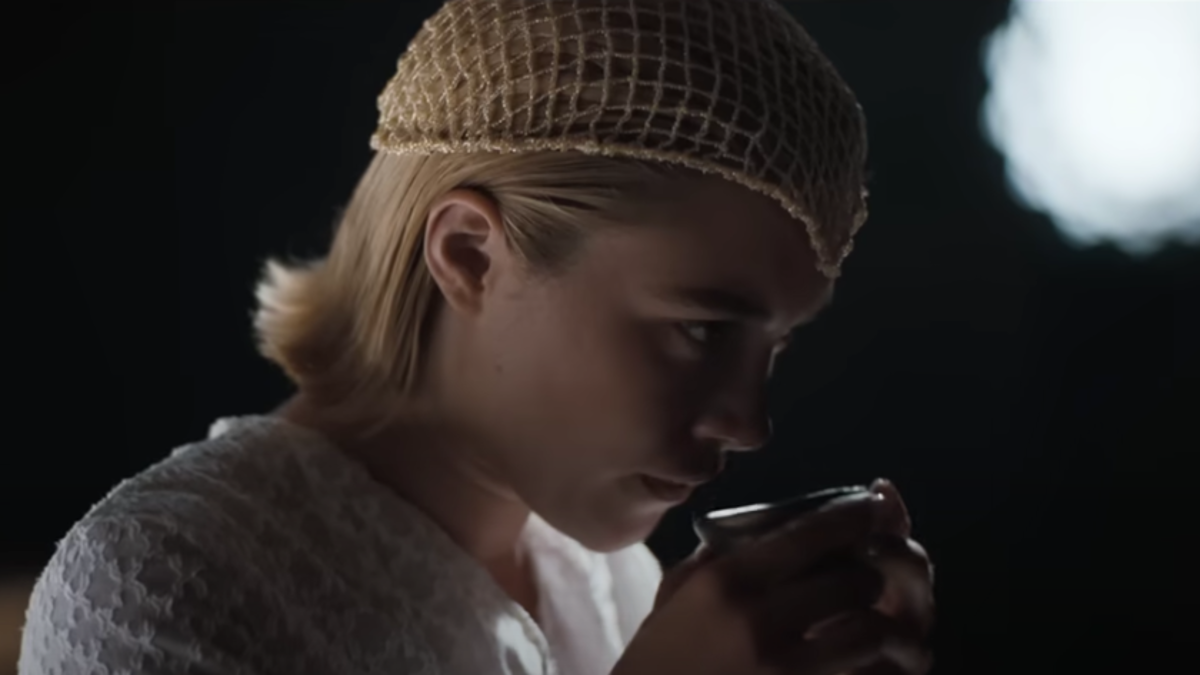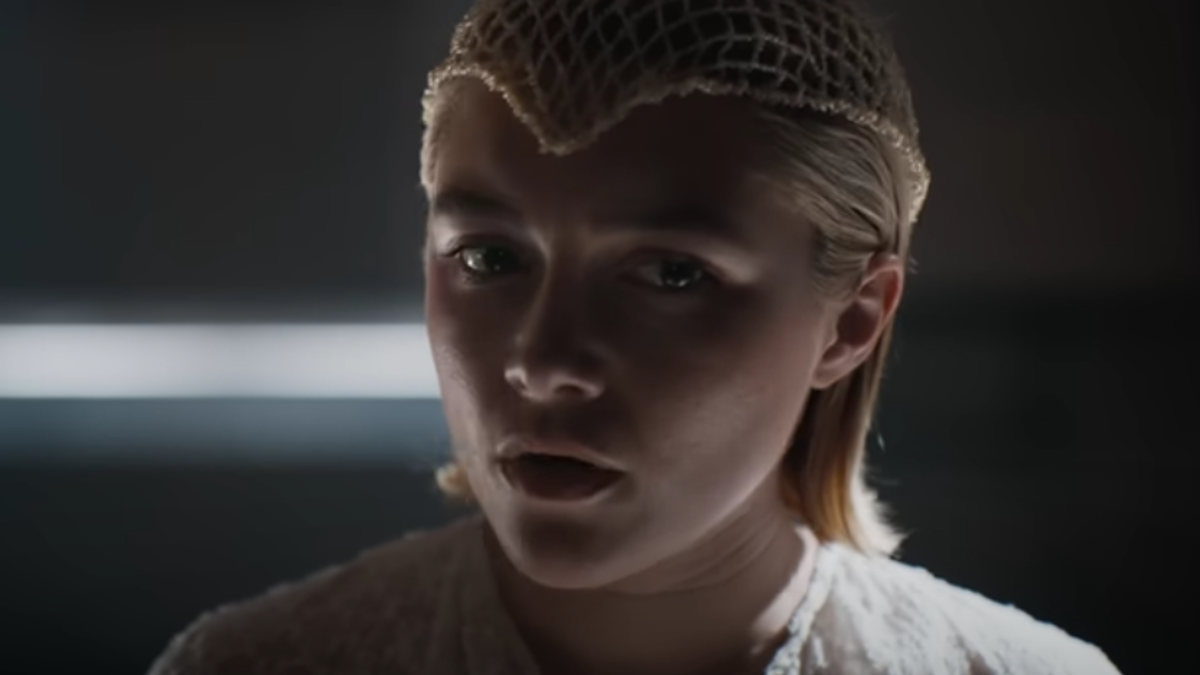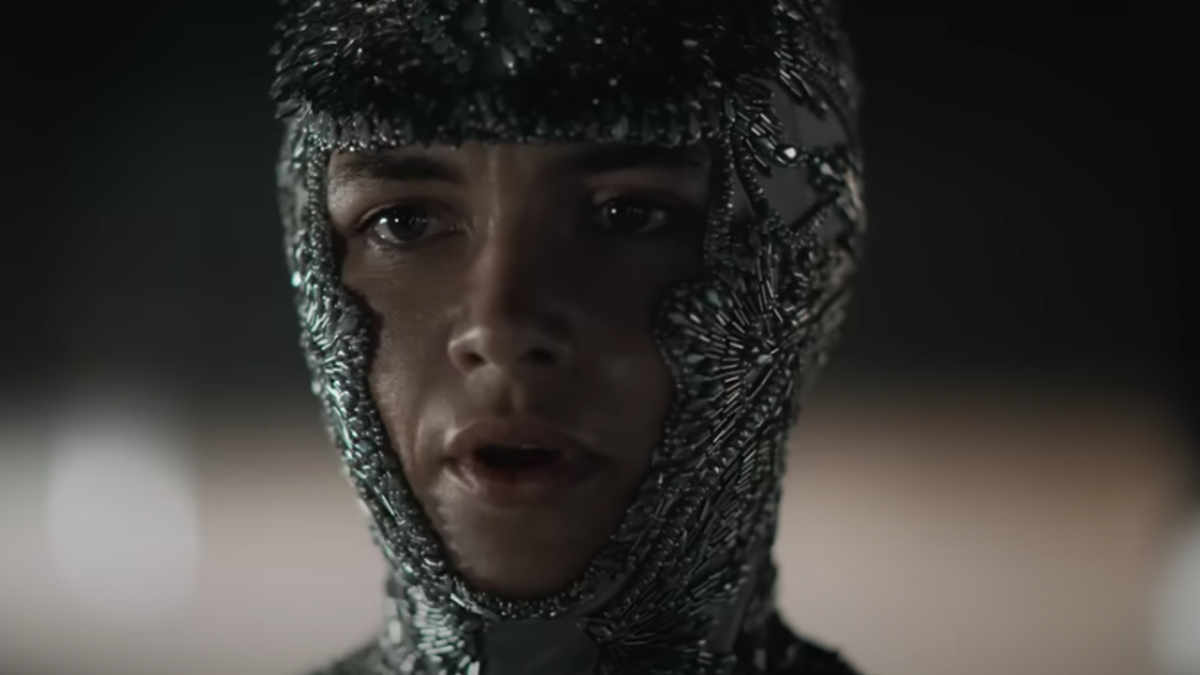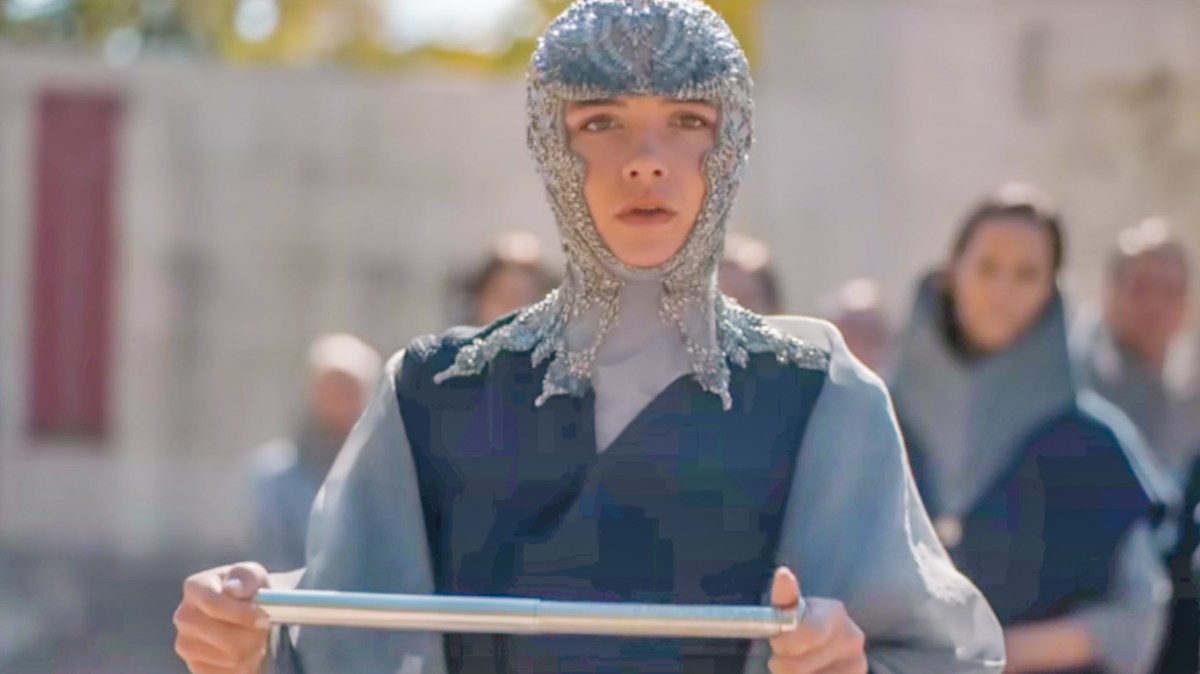Warning: this article contains spoilers for Dune: Part Two
After some stunning early reviews, the hype for Dune: Part Two is reaching a fever pitch.
The delayed second part of Denis Villeneuve’s take on Frank Herbert’s highly influential sci-fi epic is set to hit cinemas on Mar. 1, and British superstar Florence Pugh (Midsommar, Don’t Worry Darling) has been added to the already star studded cast, taking on the highly important role of Princess Irulan.
The iconic book series that the films are based on has a comprehensive mythology that’s on a par with Tolkein’s Lord of the Rings, and Irulan is a key cog in the first three novels, as well as the Dune universe in general. But just who is the princess that Pugh will be playing? Read on to find out who Florence Pugh is playing in Dune: Part Two, and why her character is so key.
Who is Florence Pugh playing in Dune: Part Two?

Pugh will take on the role of Princess Irulan, the eldest daughter of the 81st Padishah Emperor Shaddam IV (Christopher Walken). Shaddam IV is the ruler that sent the film’s protagonist Paul Atreidis (Timothée Chalamet) and his family to the desert planet of Arrakis, ostensibly to help with the extraction of melange, or spice, the rare psychedelic substance that gives beings in the Dune universe the ability to engage in safe interstellar travel. However, as we saw in the first film, this was a ploy to kill Paul’s father, Duke Leto Atreidis, who Shaddam felt was becoming too powerful.
Irulan has four younger sisters, and like Paul’s mother (Rebecca Ferguson), her mom is a Bene Gesserit. This is a devoted sisterhood who train to achieve mystical-seeming powers like intergenerational memory and the ability to use “the voice,” allowing them to speak to the subconscious of others so that they can be controlled. She has no brothers.
In the book, Irulan is described as blonde, green-eyed, and beautiful: So far, so Pugh. She has been trained in the ways of the Bene Gesserit, and it’s believed she will one day achieve the rank of Reverend Mother, which means that she has mastery of all of the powers of the sisterhood. However, this doesn’t actually happen as she doesn’t undergo Spice Agony, a ritual that involves overdosing on Melange until it is no longer toxic.
What is Princess Irulan’s role in Dune: Part Two?

We can’t actually be sure what Villeneuve has in store for Pugh’s character in Dune: Part Two, as he may have deviated from the novels. However, given how faithful Part One was to the first half of the first Dune book, we can make some relatively confident guesses.
Dune: Part One saw Paul and the Fremen tribes gearing up for a war to drive away the invading House of Harkonnen from Arrakis. Shaddam, fearing that he is losing control and may soon not be able to harvest spice, heads to the desert planet with Irulan at his side, in an attempt to reimpose some order and get production started again.
His forces, while vast, can’t compete with the Fremen on their native land. Led by Paul, the desert planet residents destroy Shaddam’s elite military unit, putting the Emperor under the young hero’s thumb. With his victory, Paul is able to set his own terms. He orders that the Imperial Armada should leave Arrakis, Shaddam should be removed from the throne, and that he will marry Princess Irulan, under the threat of destroying the spice supply chain.
Although Shaddam bristles at this, Irulan, no doubt aided by her training, is able to see Paul’s power. Paul then defeats another one of Shaddam’s minions (the heir to the House of Harkonnen), and the emperor gives in. Paul promises his concubine Chani (Zendaya) that the marriage is simply political, and that he won’t give Irulan physical affection or an heir. This is proven to be true in the next book in the series.
Why is Princess Irulan so important to the Dune universe?

In the first novel, Irulan is effectively the narrator, reciting the story from the future. Excerpts from her later writings are used as epigraphs at the beginning of each chapter in the opening book of the series, and this continues more sporadically throughout the entire series. This point of view is one of the most interesting things Herbert did from a literary standpoint, especially considering the importance of the idea of time and prescience in the Dune universe.
As long as the films keep raking in the big bucks, Villeneuve is likely to keep making them, which means that we’ll get to see Pugh take on Irulan as her character develops. In the second novel (Dune Messiah), the princess is unhappy after being sidelined, and has spent the 12 years since the end of the last novel building resentment against Chani. Aided by the Bene Gesserit, she has been drugging Paul’s concubine with a contraceptive, but her plans eventually fail after Chani goes through a spice-heavy fertility ritual.
Irulan is ordered to try and abort the pregnancy, but refuses. Chani discovers the plot and attempts to kill the princess, but is stopped by Paul, who through his prescience knows that his concubine will die once she gives birth, and is grateful that Irulan helped to put it off for so long.
This comes to pass, and Paul is blinded, so is sent to wander the desert until he dies, as is tradition for blinded Fremen. Irulan, feeling remorseful and realizing her deep love for Paul, deserts the Bene Gesserit and dedicates her life to raising Paul and Chani’s twins, Leto II and Ghanima. This greatly weakens the once powerful sisterhood.
Irulan might not have been so developed in the original novel, but in later books Herbert and other writers greatly expanded upon her past and motivations. In Paul of Dune we see her decide to become Paul’s biographer, helping to shape his mythology so that he can maintain the power he wrestled from her father. She also appears to enmesh herself with Fremen culture, helping Paul’s daughter Ghanima escape her aunt Alia’s tyranny by heading into the desert with her while her brother, Leto II, fights to secure his father’s legacy.

